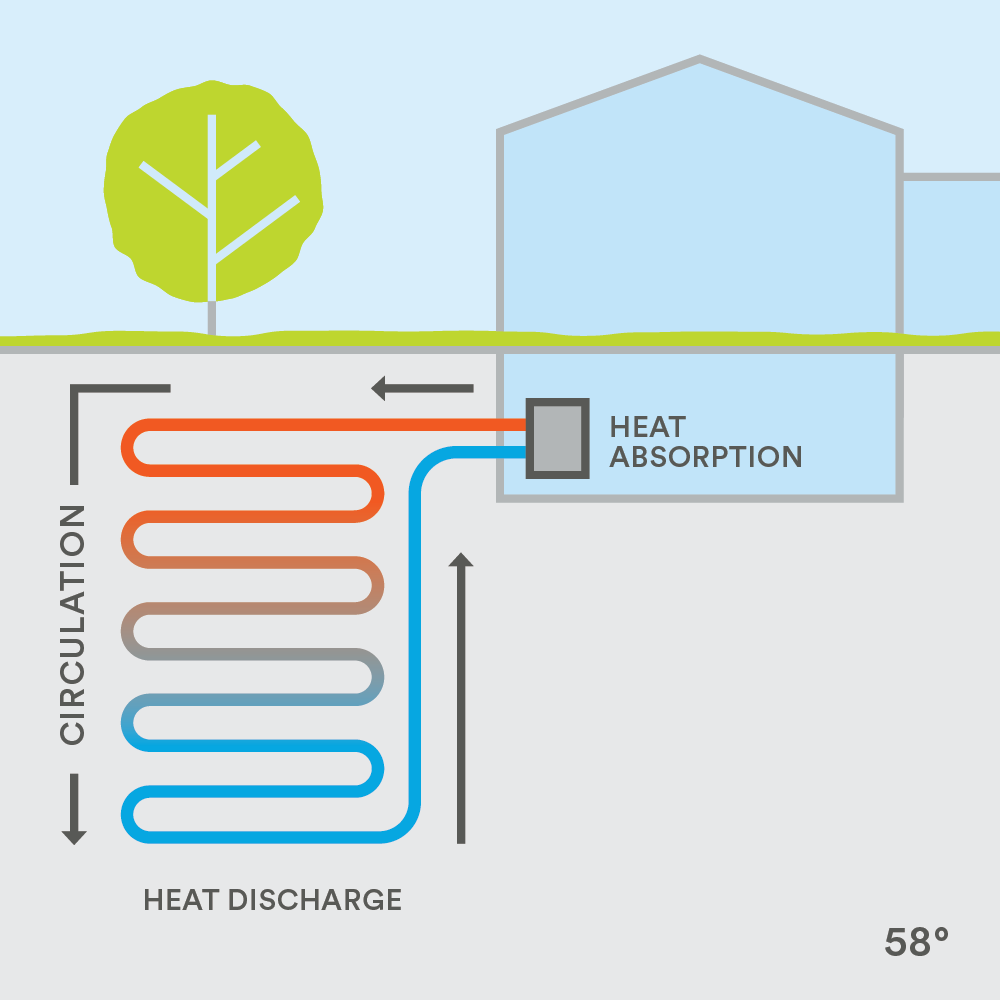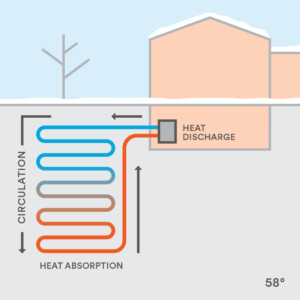By Charles C. Copeland (President/CEO, Goldman Copeland Associates) and Tristan Schwartzman (Director of Energy Services, Goldman Copeland Associates)
As part of a broader commitment to reducing carbon emissions, the City of New York commissioned a pioneering online tool that has significantly altered the landscape for geothermal ground source energy, a vital yet under-utilized source of renewable energy. The tool enables property owners to prescreen quickly and at no cost the potential of any property in New York City – about 900,000 lots – for geothermal ground source energy. The tool has since been replicated by Westchester County, and the two online prescreening tools together provide a template for the rest of the nation – for large cities and for suburban and more rural areas. Property owners in New York City and Westchester should take full advantage of them.
What is Geothermal Energy?
Geothermal ground source energy is thermal energy extracted or stored in the ground subsurface. That energy can be accessed from lot areas to provide efficient heating and cooling for nearby buildings. Its great benefit is that the stored thermal energy is reusable. Electric energy is needed, but only to move the thermal energy, rather than to generate it. The heating and cooling systems that enable the use of ground source energy are called geothermal or ground-source heat pumps.
A geothermal ground source heat pump system works as follows: a series of pipes buried in vertical wells, or, in some locations, submerged horizontally below ground, allow fluid to be circulated to the building’s heat pump system. This system provides heated or cooled air, water, or refrigerant for the building. In winter the heat pump extracts heat from the ground and transfers it into the building. In summer the reverse occurs: heat is absorbed from the building and discharged into the ground.


Figure 1. ground source heat pump systems in cooling and heating mode.
Because electricity is only used to move thermal energy, rather than generate it, geothermal heat pumps are considered a high-efficiency electric heating and cooling option, lowering building-based carbon emissions, and reducing strain on the electric grid relative to conventional electric systems.
Transitioning to efficient energy systems, like geothermal, is vital to the nation, as heat waves have become more common, longer lasting, and more extreme, placing our electrical infrastructure in jeopardy. This year, the California grid had record demand of 52,061 MW; the previous record was 50,270 MW in 2006. Reducing carbon emissions is similarly a priority, with New York City committing to carbon neutrality by 2050, and setting carbon emission limits for buildings that are 25,000 square feet or larger.
Core Considerations
The greatest opportunity for geothermal ground source energy arises with properties covering larger areas with less intense density. Narrowly sited office towers in Manhattan are typically less suitable than low and mid-rise office and housing developments, academic and office campuses, medical centers, and government complexes in New York City or Westchester.
The greatest opportunity also occurs when a new heating or cooling system is needed, as the upfront installation costs are substantial. The cost of installation would never be justified by payback period alone unless considered incrementally against the cost of an alternative, conventional centralized system, as well as the potential for fines under Local Law 97. The cost of installation can be offset over time, however, by energy and maintenance savings, and incentives are available from federal and state governments and local energy providers.
In New York City, cost-effective results are less likely in Manhattan and the Bronx, where building loads often exceed the potential thermal capacity within the available outdoor area. Staten Island, Queens, and Brooklyn show better results, as outdoor space for installing piping or drilling is more plentiful and building loads are generally less intense.
For some properties with greater density and more limited space, a hybrid system can be feasible. Such a system could, for instance, combine the geothermal heat pumps with conventional, non-fossil-fuel systems like air-to-air heat pumps or cooling towers. All decisions must ultimately be made after completing an in-depth feasibility study for the site and taking account of any technological improvements over time.
Prescreening For Implementation
To encourage the adoption of geothermal heat pump systems, our engineering firm designed the New York City pre-feasibility tool for the Mayor’s Office of Sustainability and the Department of Design and Construction, in 2018, and helped replicate it for Westchester County, in 2021, with support from the New York State Energy Research and Development Authority (NYSERDA).
The overall purpose of the online tools is to provide a threshold assessment of the potential for use of ground source heat pumps for buildings within the jurisdiction. That assessment is based on key known variables, including but not limited to building thermal demand, land area availability for drilling, and geology at the Borough-Block-Lot (BBL) level. The results provided by the tool are based on a feasibility analysis of three different ground coupling systems (closed loop, standing column well, and open loop) on every building lot. Building owners and their engineers can choose the location of their building on a web-based map to provide them with a simple payback period to guide them in a decision to fully review project cost, savings, and feasibility. A more detailed investigation is required before implementation.
Geothermal ground source energy offers enormous promise to the region and the nation. New York City and Westchester have taken leadership roles in making online prescreening tools available at no cost to property owners. Every property owner should use the tool to understand the potential of geothermal ground source energy for their property and, therefore, for the environment overall.
Charles Copeland is President and CEO of New York City-based Goldman Copeland Consulting Engineers, where Tristan Schwartzman is a Principal and the Director of Energy Services. Copeland was named Energy Engineer of the Year (2006) by the Association of Energy Engineers (AEE). Schwartzman was named Energy Engineer of the Year (2022) by the New York Chapter of the AEE.